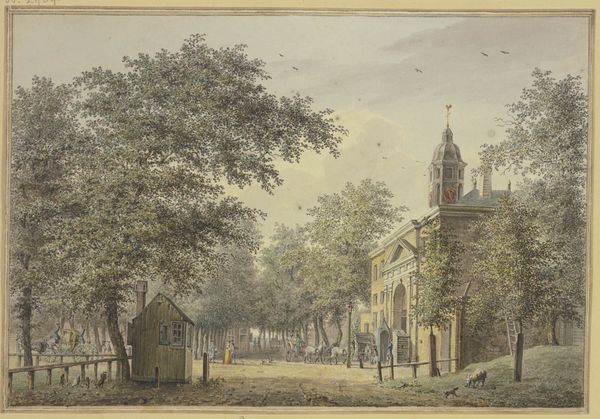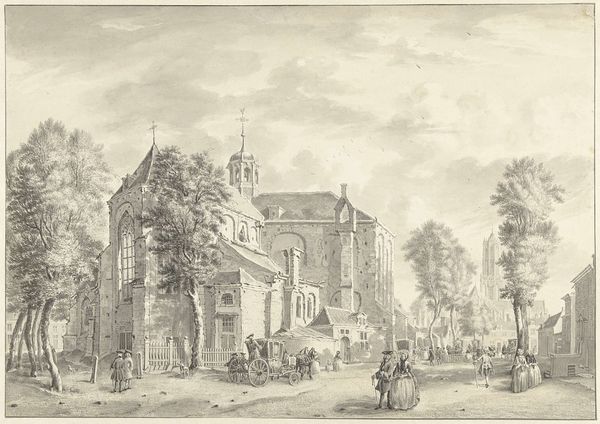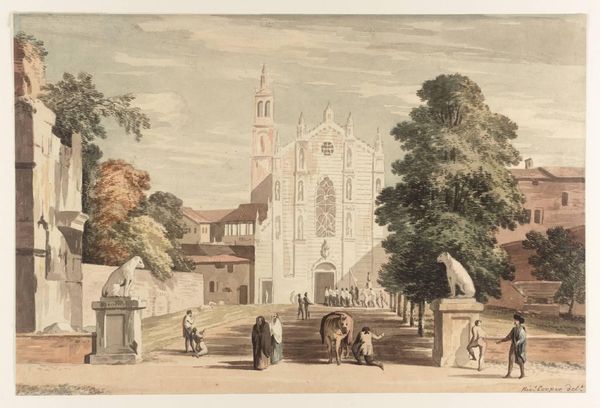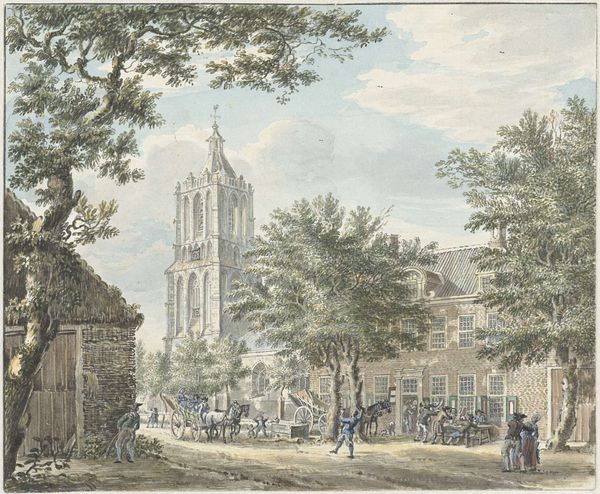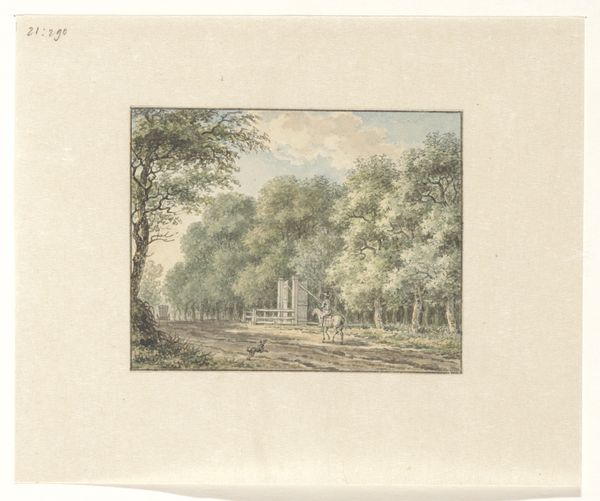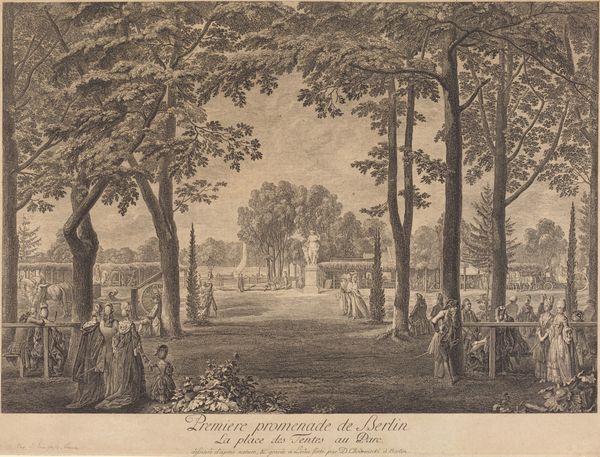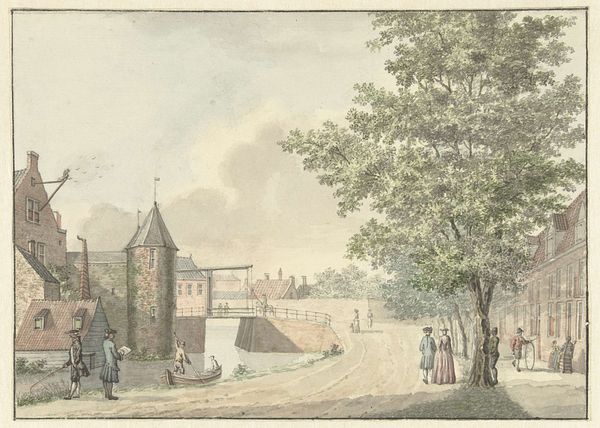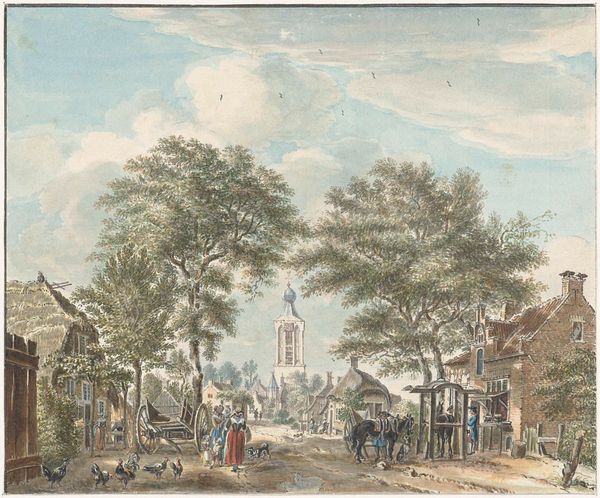
drawing, plein-air, watercolor
#
drawing
#
netherlandish
#
dutch-golden-age
#
plein-air
#
landscape
#
watercolor
#
15_18th-century
#
cityscape
#
watercolor
Copyright: Public Domain
Editor: This delicate watercolor drawing, “Lisse near Haarlem,” created by Paulus van Liender around 1775, is a lovely snapshot of a Dutch town. I’m struck by how the composition is framed by the trees. What details stand out to you? Curator: The success of this drawing resides in the calculated placement of compositional elements. Notice how the artist utilizes the trees to create a strong foreground, functioning as a proscenium arch that directs our gaze. Editor: It does feel like looking at a stage. Curator: Precisely. Van Liender establishes depth not only through linear perspective but also through tonal variation. Observe the subtle shift from darker, more saturated greens in the foreground to the paler hues in the distance where the church tower resides. This aerial perspective contributes significantly to the illusion of space. And consider the materiality, the layering of the watercolour, how it lends itself to these effects. Do you see the subtle washes? Editor: Yes, I see how light affects the scene, softening it. Are those figures interacting? It looks quite informal. Curator: Indeed, he animates the scene with figures rendered with economy and precision, their placement carefully considered to lead the eye through the pictorial space and offer contrasting horizontal rhythms to offset vertical geometries. Notice the carriage's wheel, and then observe its echo in the adjacent window and clock face. It's very thoughtfully considered. Editor: I didn’t notice all of that! Thanks, that really highlighted how meticulously this scene was crafted. Curator: Indeed. Close visual analysis allows us to perceive how artistry and intent intertwine.
Comments
No comments
Be the first to comment and join the conversation on the ultimate creative platform.
